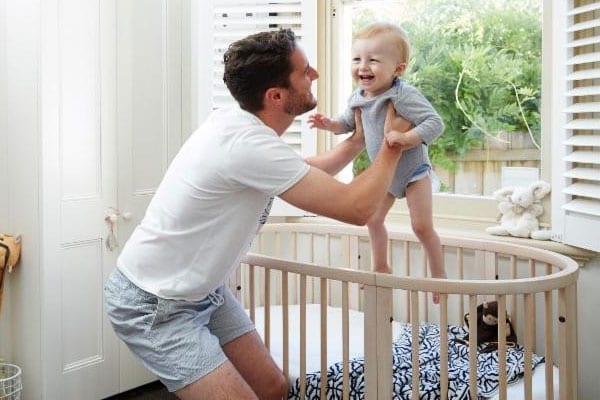
Not only is workplace flexibility for BOTH parents good for everyone involved, most men actually want it!
Studies show that when working parents take time to be with their newborns, outcomes are better for the children and families.
Mark Zuckerberg
There’s been a huge focus on workplace flexibility lately. In the wake of a report released by Chief Executive Women and Bain & Co, one might argue that the media’s reporting on flexibility is this season’s new black!
Their report, The Power of Flexibility: A Key Enabler to Boost Gender Parity And Employee Engagement surveyed employees of large and small Australian businesses, government and not-for-profit organisations, revealing that working flexibly is still viewed as the exception to the rule in the majority of Australian companies. The report argues a powerful case for implementing flexible work arrangements, “as they create positive advocacy about the organisation when widely used.”
The details, however, suggests the response is gendered: women working flexibly are stronger advocates of their organisations than those who are not, while advocacy was lower for men who are or have worked flexibly.
Why? Because the underlying assumption in our workplaces says “Real men don’t flex.”
Actually, the data from the Workplace Gender Equality Agency on the 2.5 million employees working for organisations with more than 1000 employees (and an almost equal gender split) shows that women are still the vast majority of primary carers.
60% of working fathers would like to work part time, but are unable to. And with good reason – more than 97% of the fathers in Australia reported that their managers’ expectations either stayed the same or actually increased after the birth of their most recent child.
The changes that women demand – parental leave and flexibility – are not yet issues we associate with men. Well, that is of course unless you are Mark Zuckerberg. A notable exception albeit welcome voice and role model to this debate.
So what’s the catch?
Firstly, discrimination. According to the Australian Human Rights Commission’s Supporting Working Parents Report, 1 in 4 fathers who took paternity leave reported experiencing discrimination for taking as little as 2 weeks of paternity leave. (And let’s not forget that 1 in 2 women experience it too…)
Secondly, and perhaps most significantly, we need to talk about money.
The average age of a first time mother is 28.9. The average age of a first time father is 33. Throw in a gender pay gap, financial penalties for women when they take maternity leave, and the default position for most couples is that the father is the primary breadwinner and the mother is the primary carer.
It is no wonder that new dads rank their primary concern as job security. The short-term financial thinking by new parents ignores their potential for access to greater wealth over the long-term, including retirement, by ignoring the earning potential of the mother. It also feeds a stereotype that real men don’t flex.
Let’s focus on those men who are taking parental leave: In our 1:1 coaching business, we are increasingly seeing a trend of dads sharing the parental leave with their partners. But here’s the catch: in the majority of those scenarios, the mother is earning equal to or more than their partner. That is, there is a different financial driver impacting their decisions.
This data tells us that we need to debunk to parents the myths about wealth creation. Because real men can, and do, flex.
Achieving gender equality goes far beyond targets and policies. It requires education combined with a vision that is capable of transforming the limiting beliefs that hold us back – or in this case debunking to parents the myths about wealth creation. We need leaders to be role models, with a specific focus on addressing the discrimination that undermines the potential for men to care and women to work.
In the series of interviews with women we conducted last year, none articulated the benefits of flexibility and how to use it better than Australia Post’s Lauren Jauncey (check out the video below).
Lean in, call it out, make a difference.



